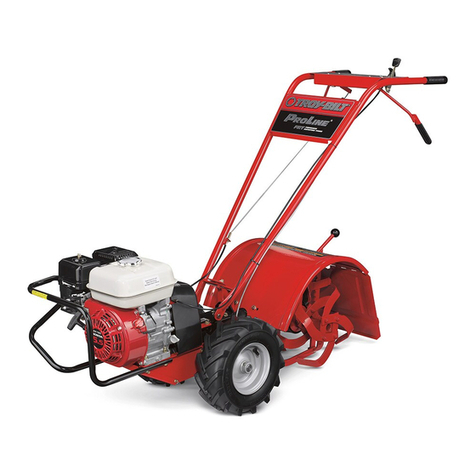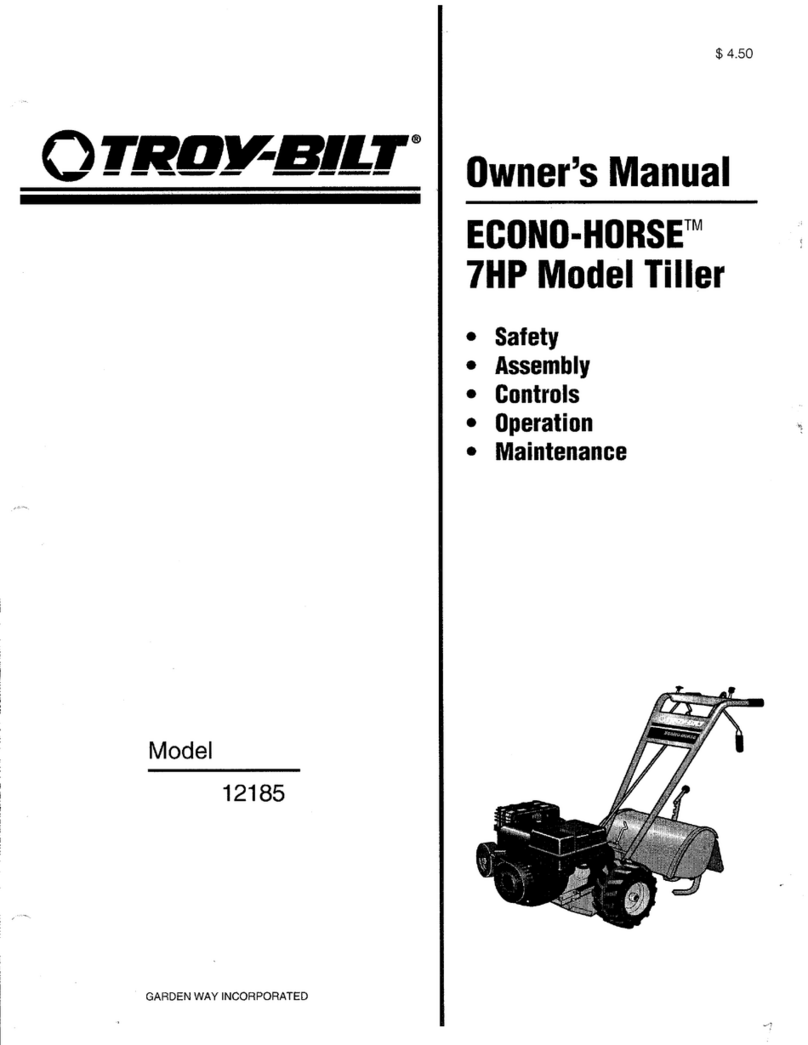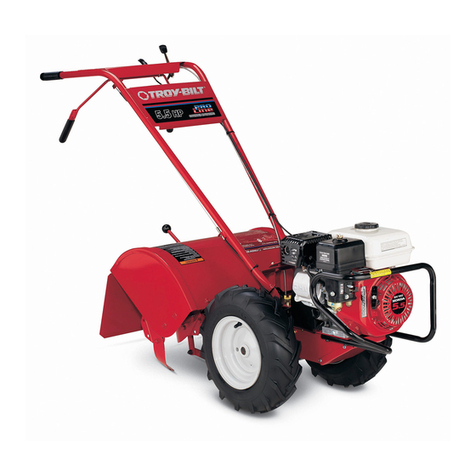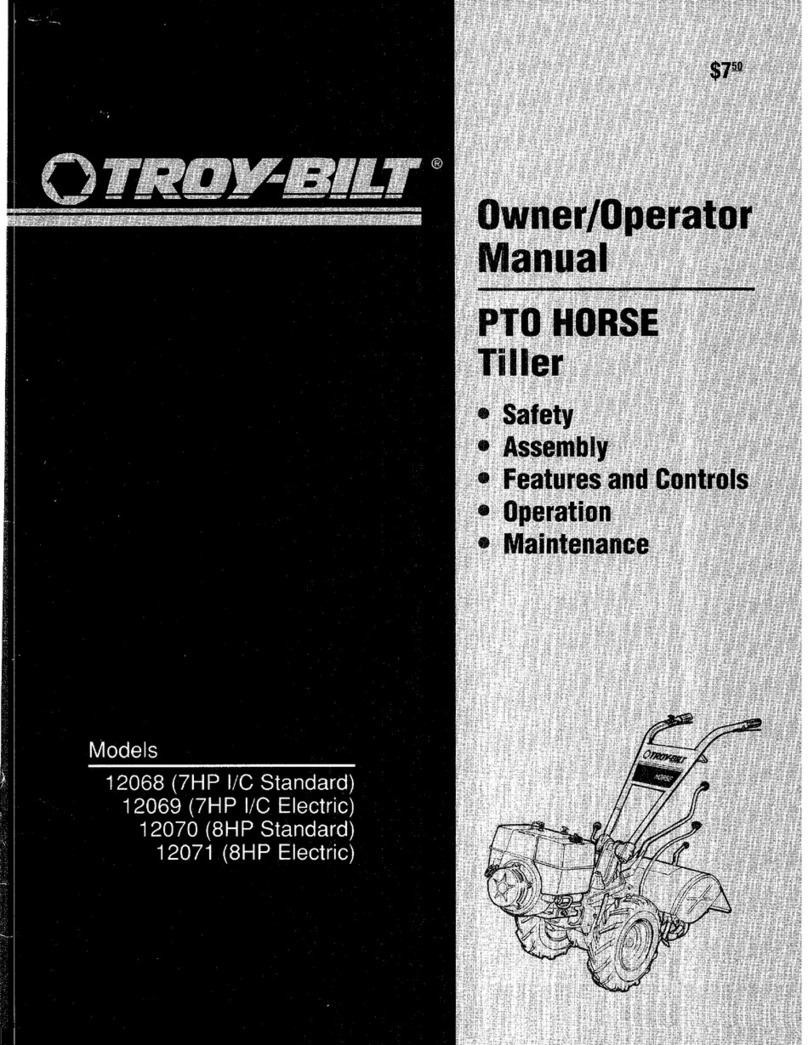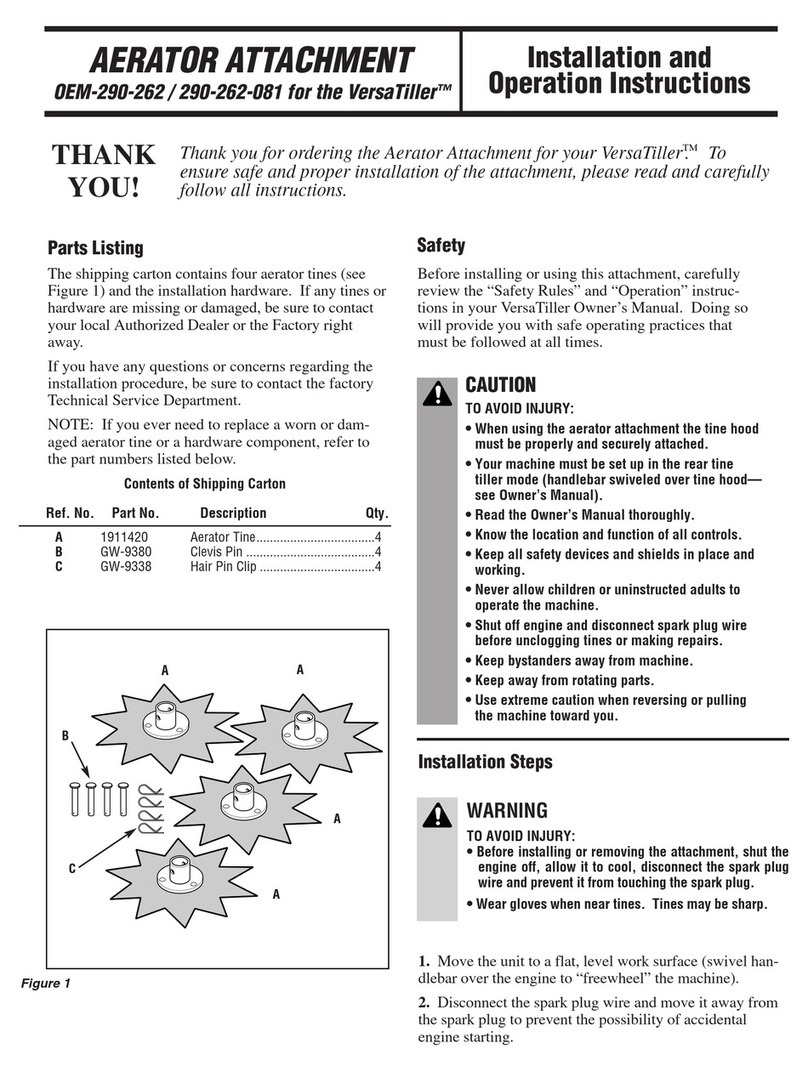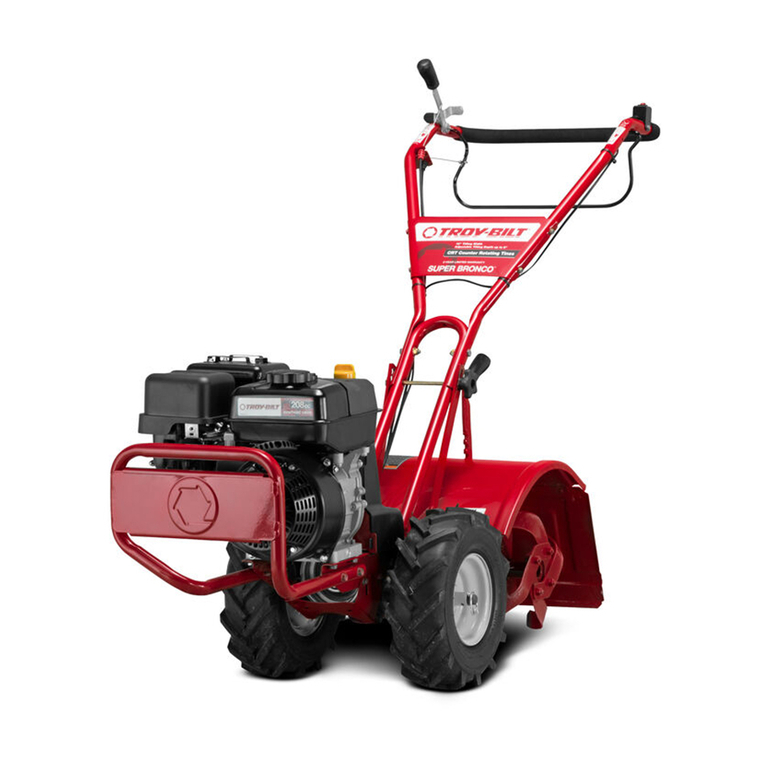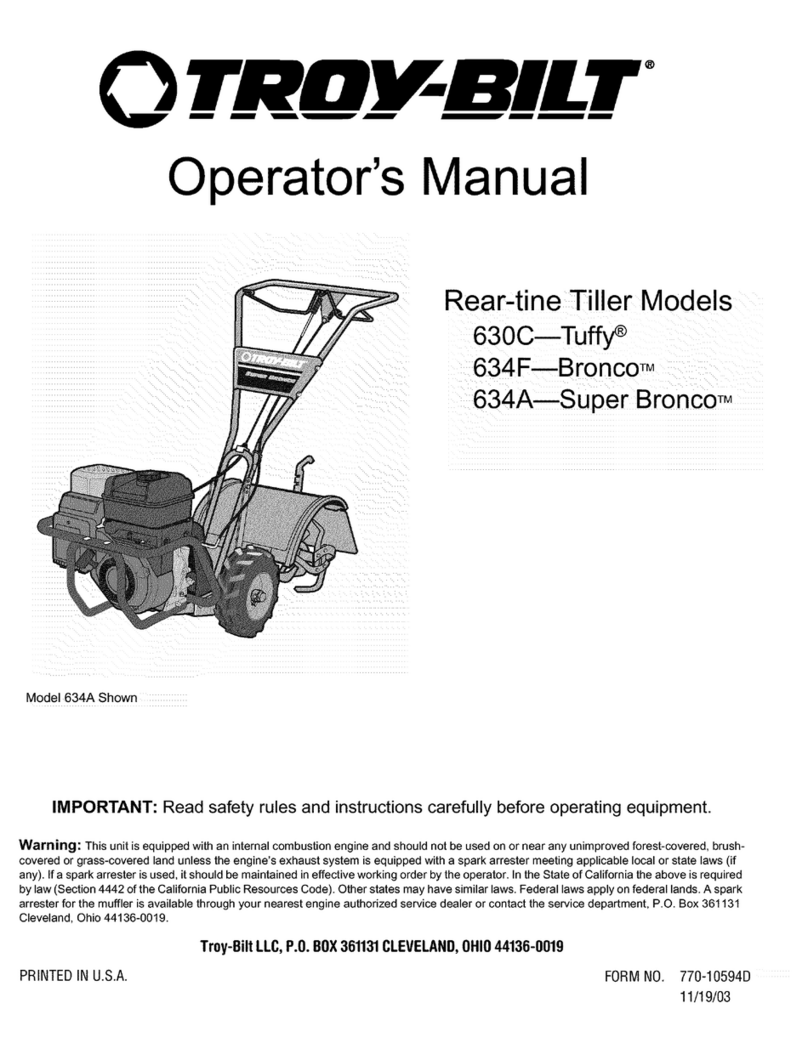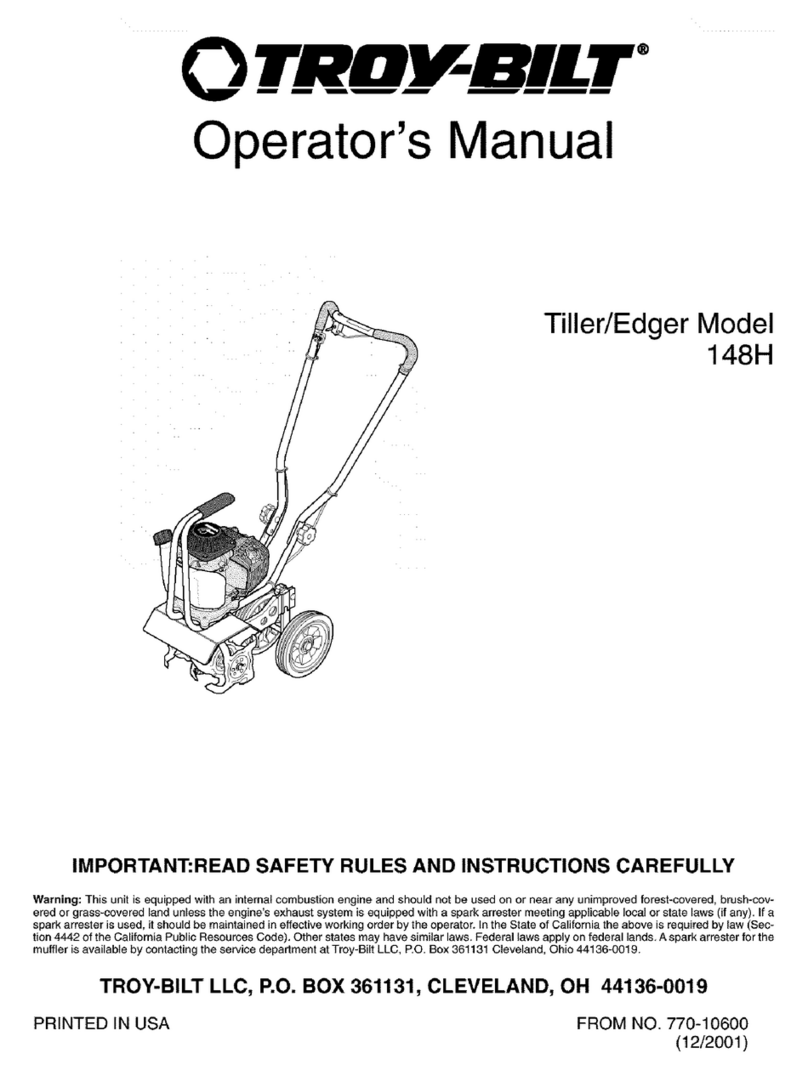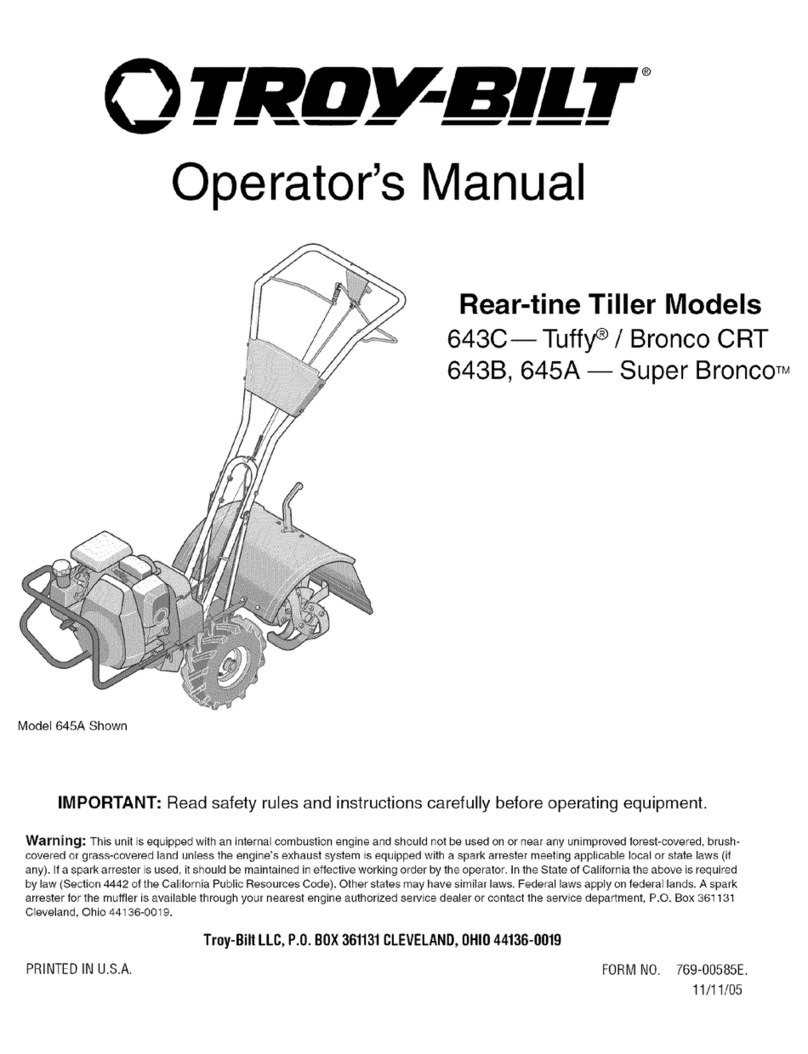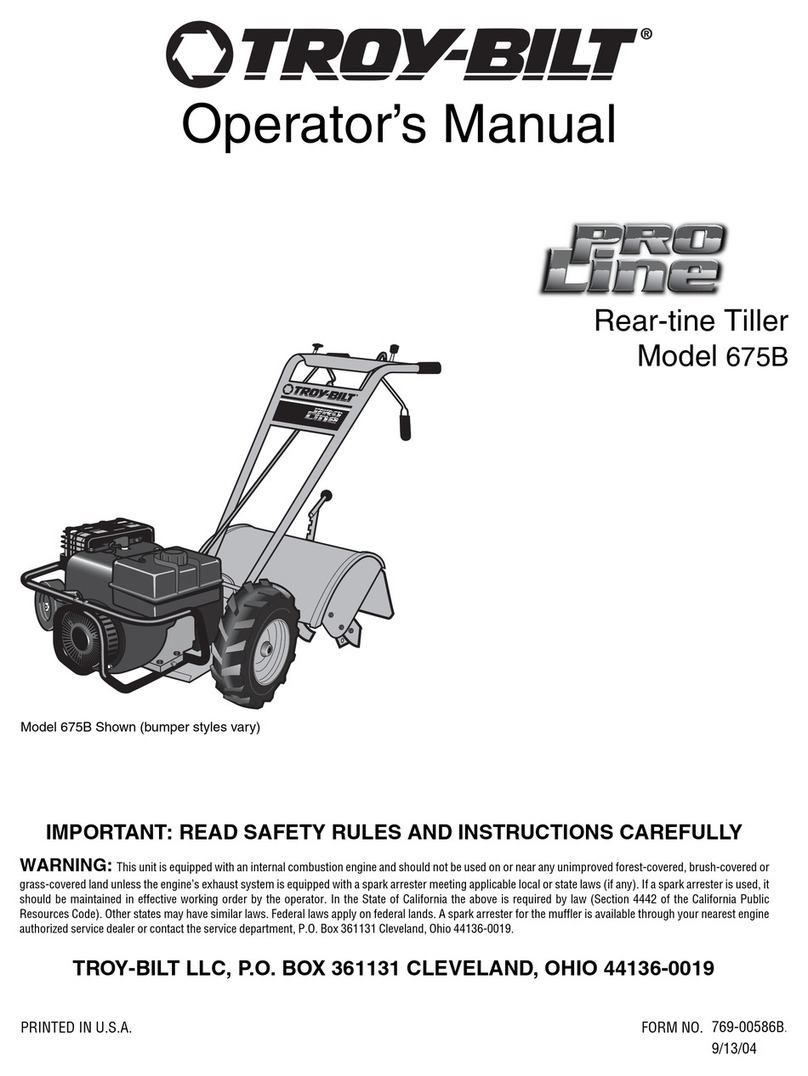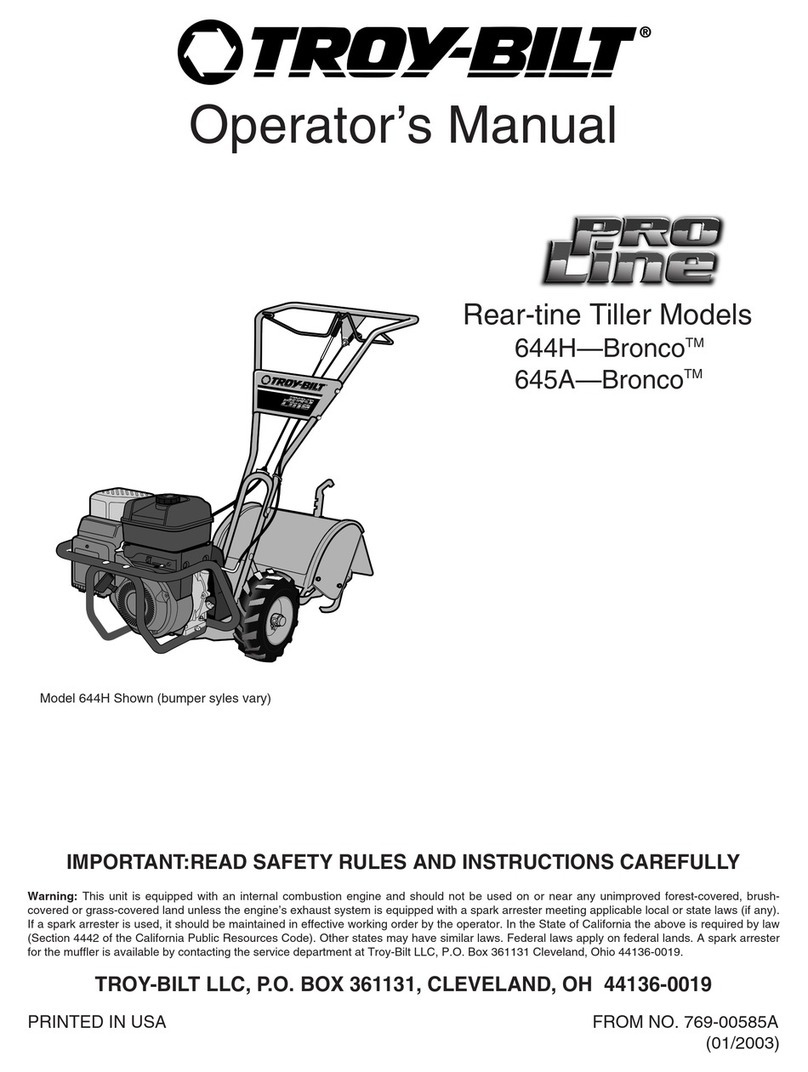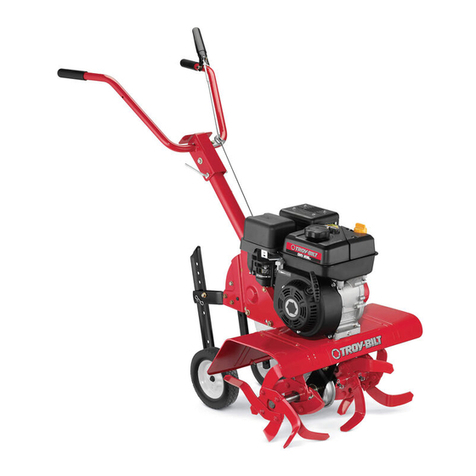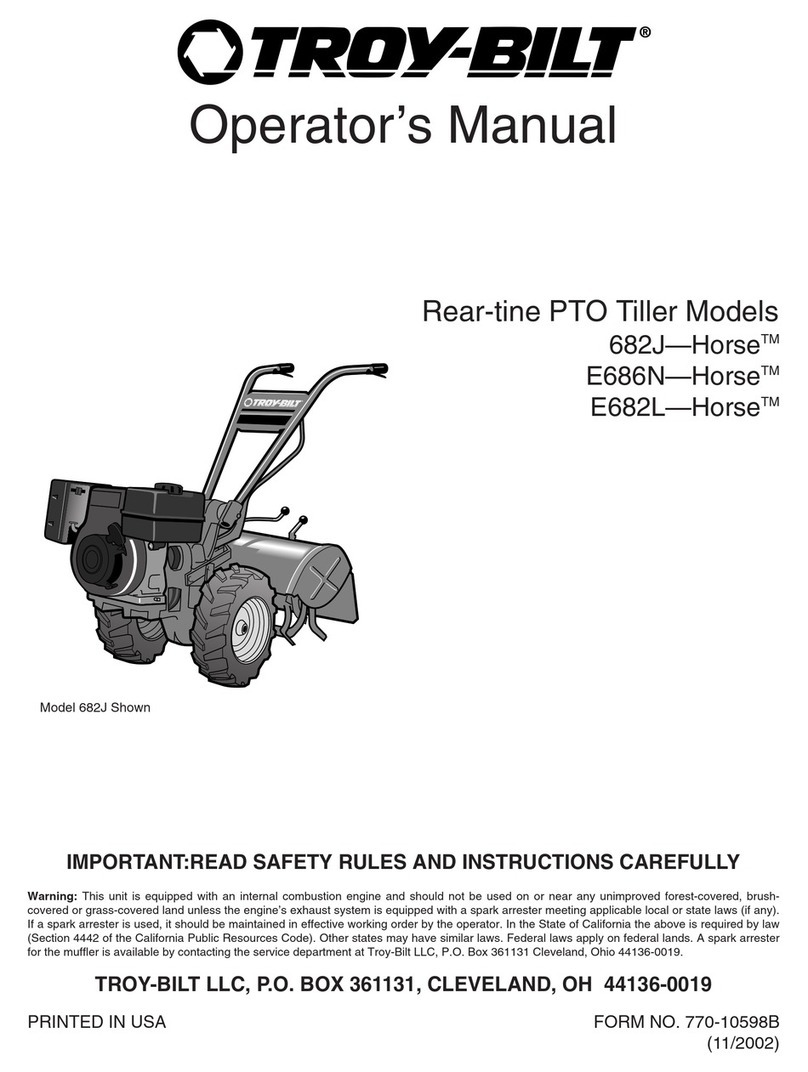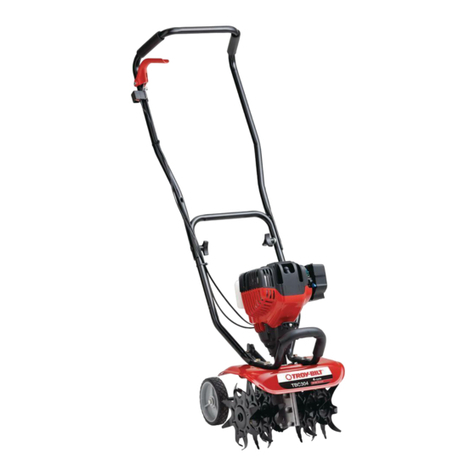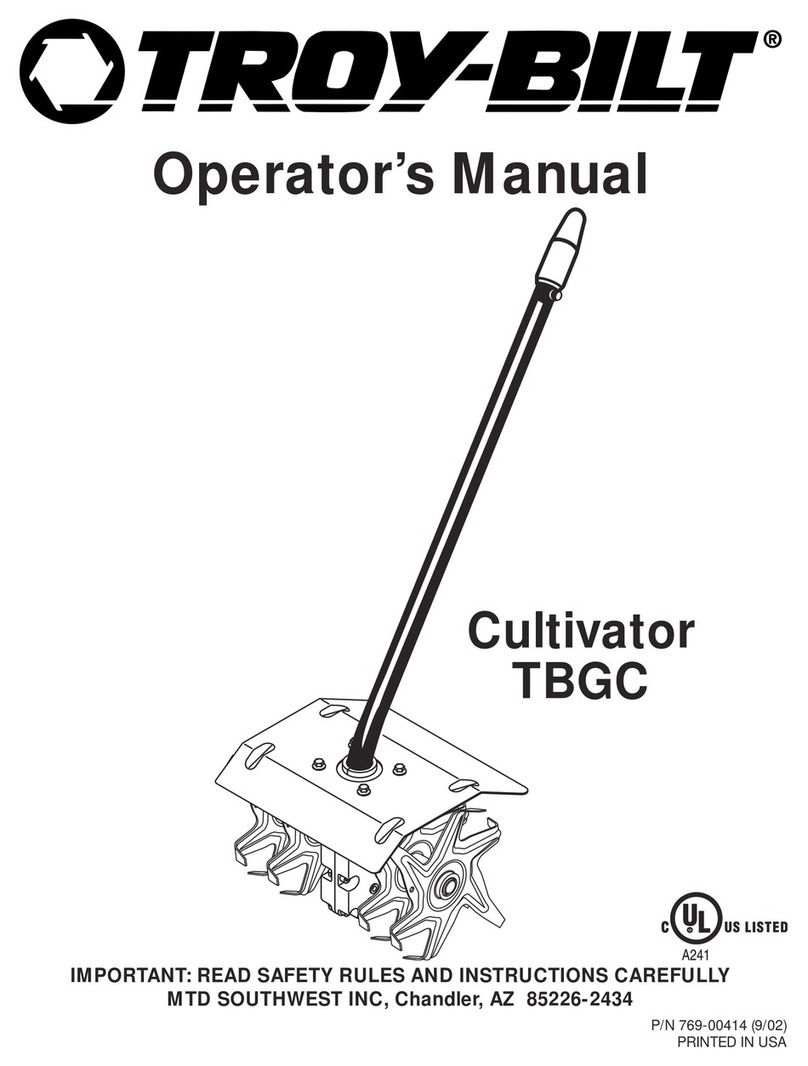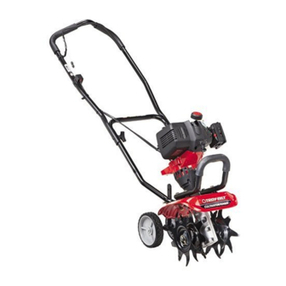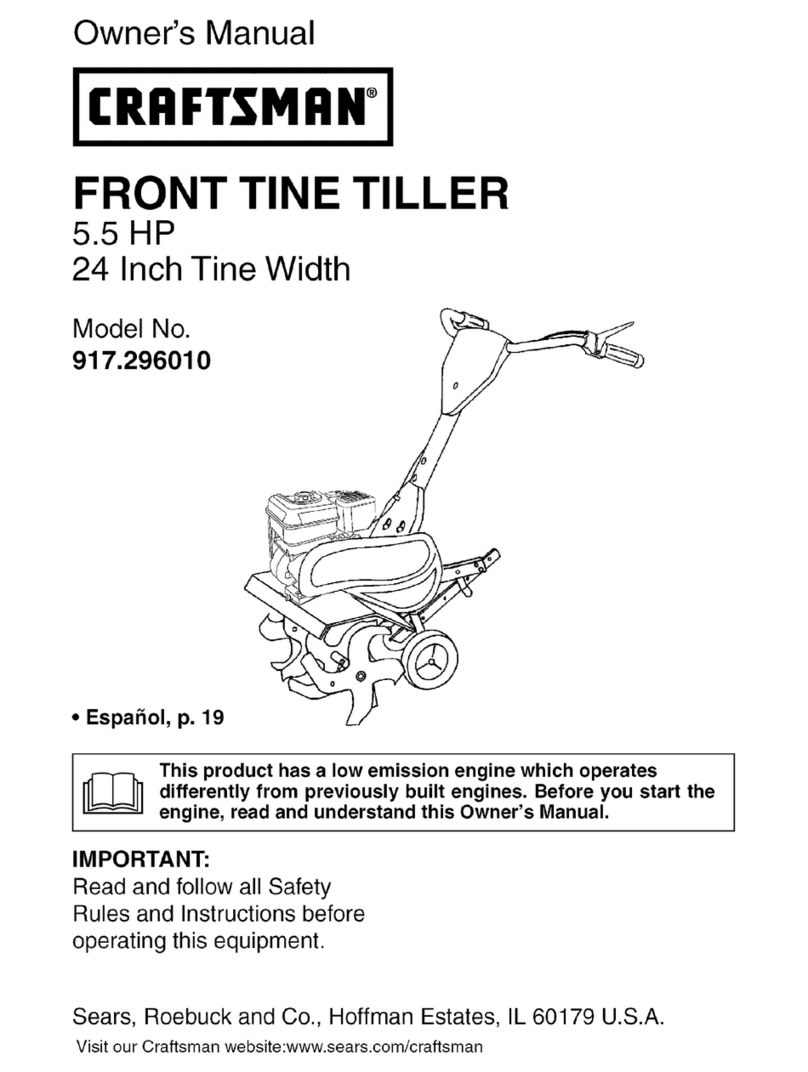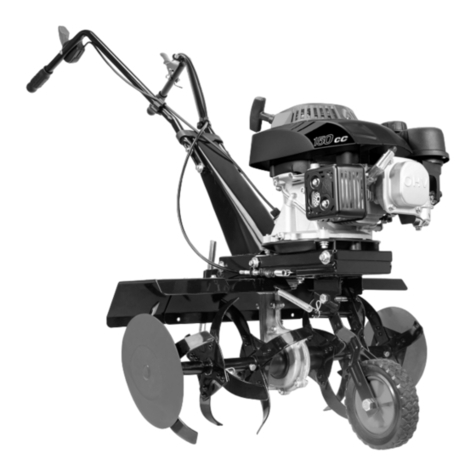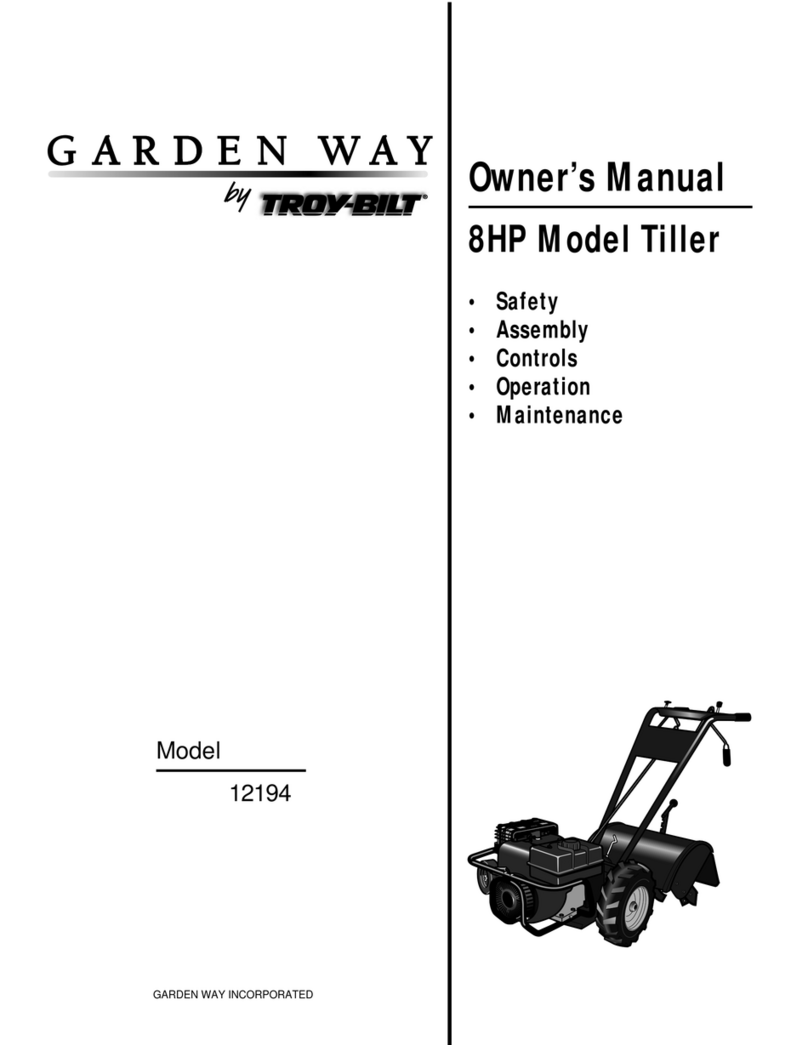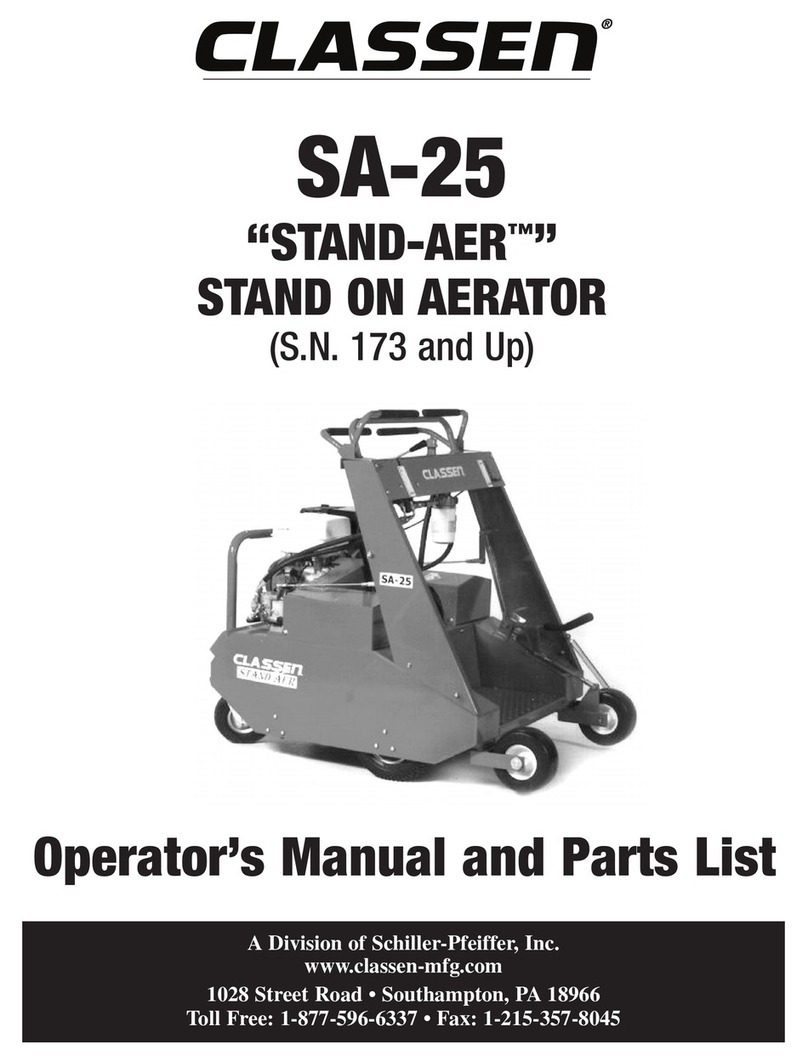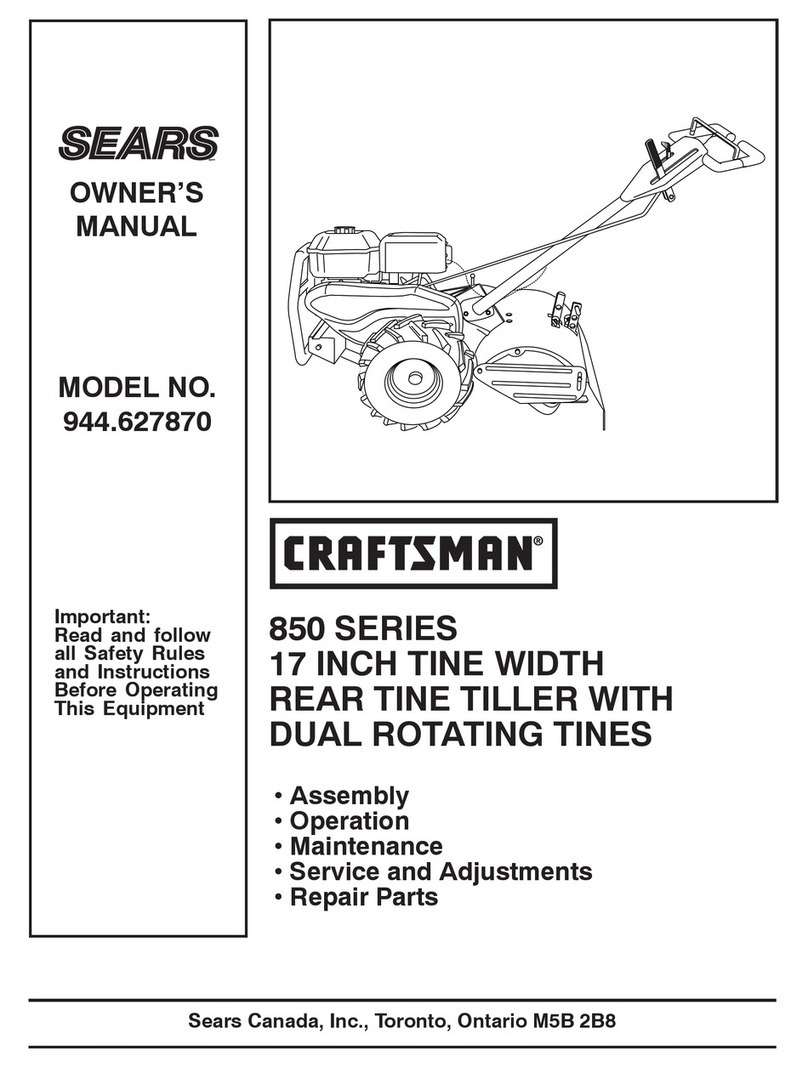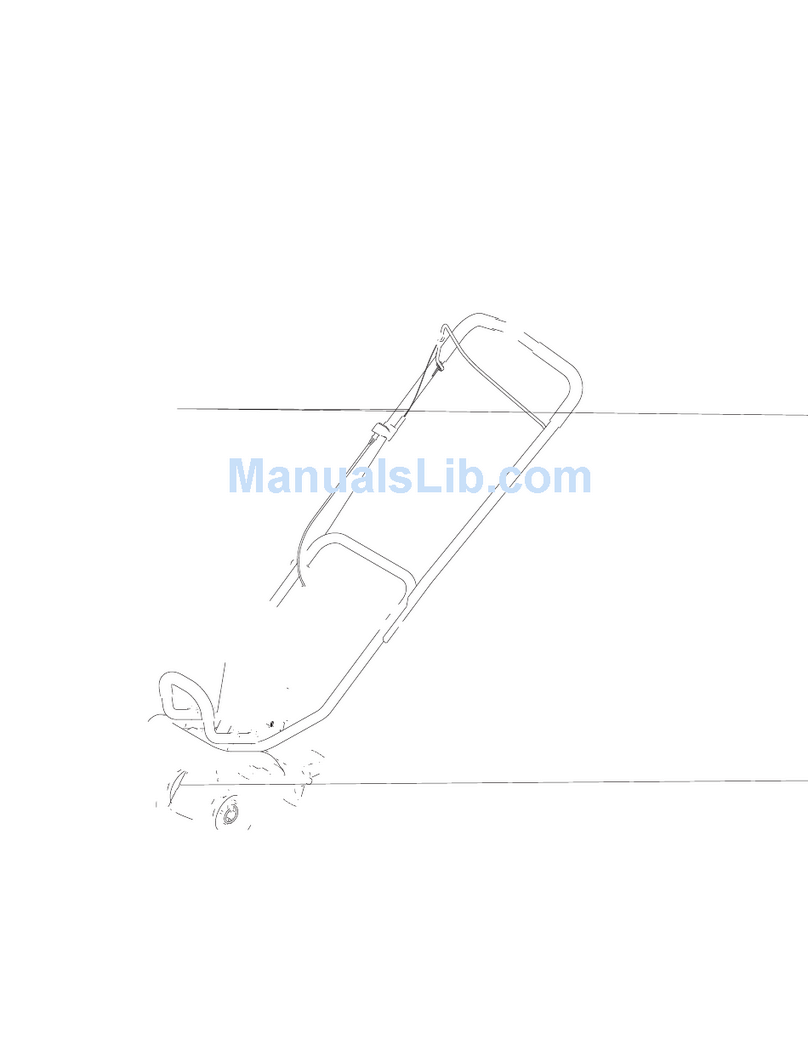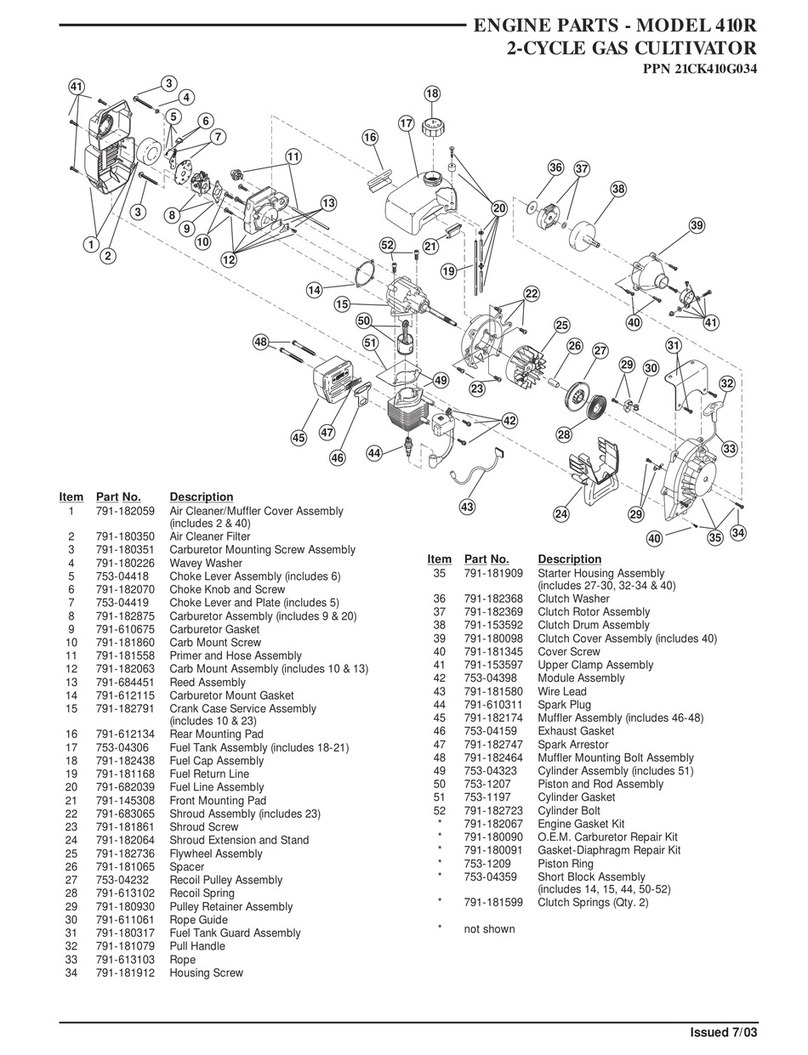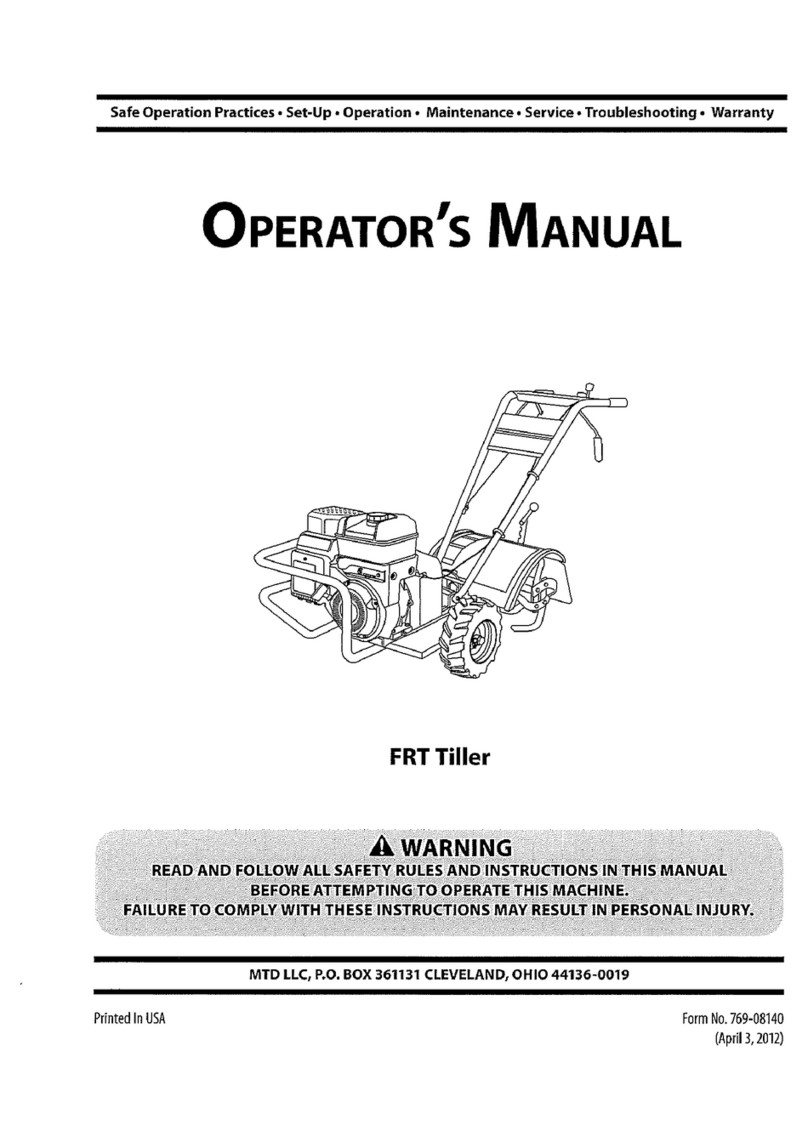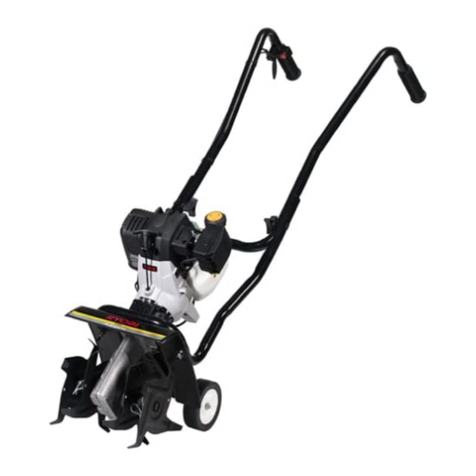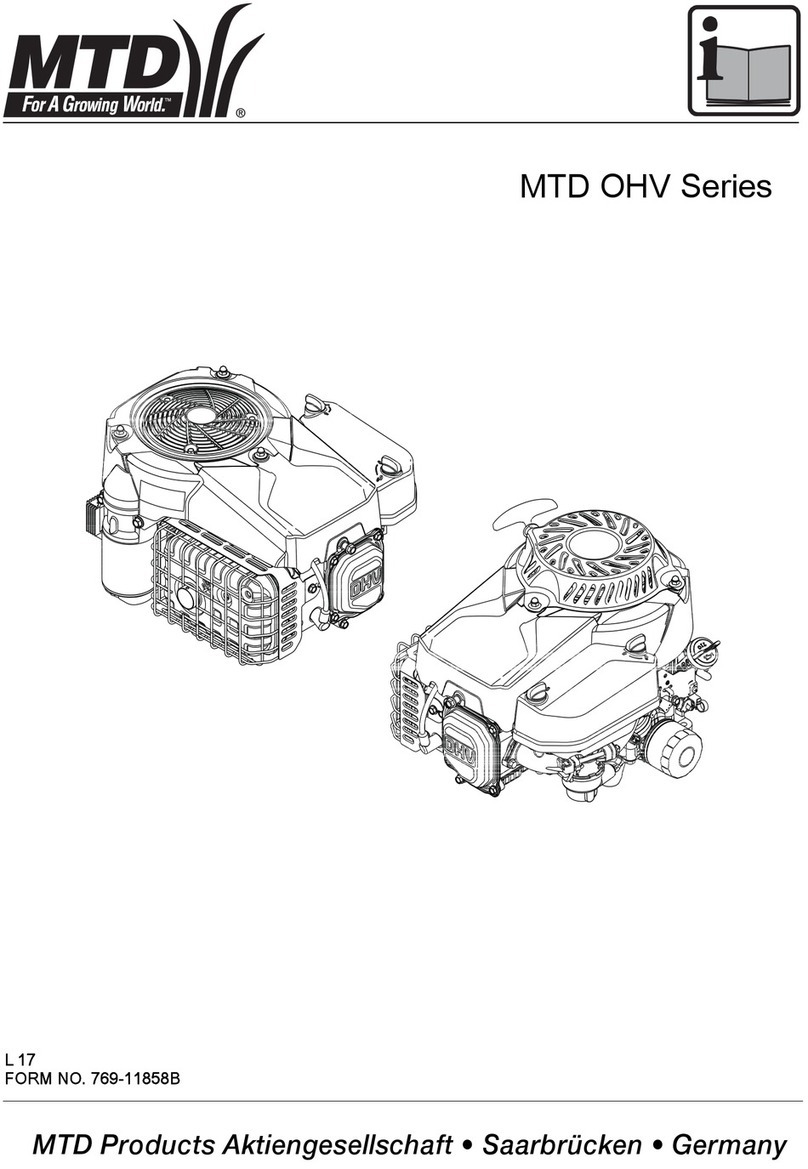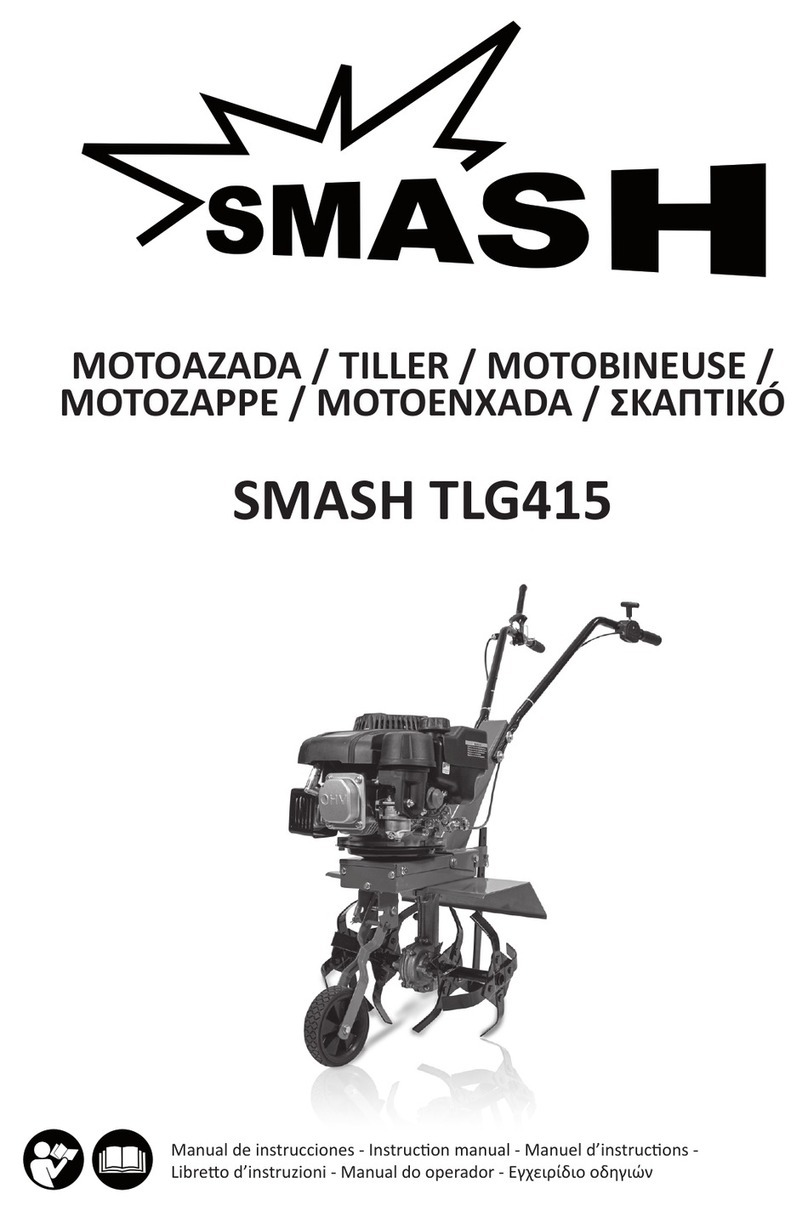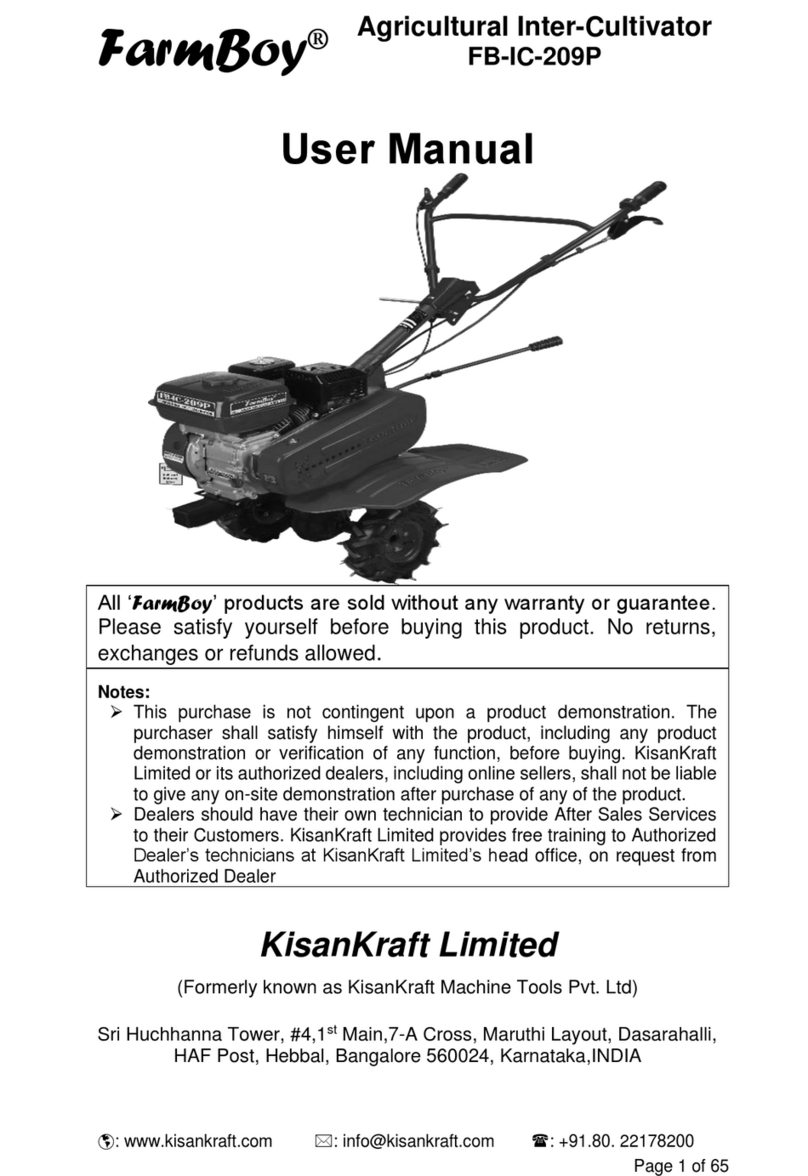
5.Iftheunitshouldstarttovibrateabnormally,
stoptheengine,disconnectthesparkplug
wireandpreventitfromtouchingthespark
plug,andcheckimmediatelyforthecause.Vi-
brationisgenerallyawarningoftrouble.
6.Stoptheengine,disconnectthespark
plugwireandpreventitfromtouchingthe
sparkplugwheneveryouleavetheoperat-
ingposition,beforeuncloggingthetines,
orwhenmakinganyrepairs,adjustments
orinspections.
7.Takeallpossibleprecautionswhenleav-
ingthemachineunattended.Stoptheen-
gine.Disconnectsparkplugwireandmove
itawayfromthesparkplug.MoveWheel
GearLevertoENGAGE.
8.Beforecleaning,repairing,orinspect-
ing,stoptheengineandmakecertainall
movingpartshavestopped.Disconnect
thesparkplugwireandpreventitfrom
touchingthesparkplugtopreventacci-
dentalstarting.
9.Alwayskeepthetillertinehoodflap
down.
10.Neverusethetillerunlessproper
guards,plates,orothersafetyprotectivede-
vicesareinplace.
11.Donotrunengineinanenclosedarea.
Engineexhaustcontainscarbonmonoxide
gas,adeadlypoisonthatisodorless,col-
orless,andtasteless.
12.Keepchildrenandpetsaway.
13. Neveroperate thetiller underengine
powerifthe WheelGearLever is in DIS-
ENGAGE(FREEWHEEL).In this position,
thewheels will notholdthe tiller back
andthe revolvingtines could propelthe
tiller rapidlybackward,possiblycausing
lossofcontrol. Always move theWheel
GearLeverto ENGAGEbeforestarting the
engine or engagingthe tines4Nheelswith
the Forward Clutchor the ReverseClutch.
14. Beawarethat the tiller may unexpect-
edly bounceupward or jump backward if
the tines should strike extremely hard
packedsoil, frozen ground, or buried ob-
stacleslike largestones, roots, or stumps.
If in doubt aboutthe tilling conditions, al-
ways usethe following operating precau-
tions to assist you in maintaining control
of thetiller:
a. Walk behindand toone sideof the
tiller, usingone handon thehan-
dlebars.Relax yourarm, butusea
securehandgrip.
b. Useslowerenginespeeds.
c. Clear thetilling areaof all large
stones,rootsand other debris.
d. Avoidusingdownwardpressureon
handlebars.If needbe, useslight
upwardpressureto keepthe tines
from diggingtoo deeply.
e. Beforecontacting hardpackedsoil
at the endof a row,reduceengine
speedand lift handlebarsto raise
tines out of thesoil.
f. In anemergency, stoptines and
wheels by releasingwhichever
ClutchLeverisengaged.Donotat-
tempttorestrainthe tiller.
15. Donot overloadthe tiller's capacityby
attempting to till too deeplyat too fast a
rate.
16. Neveroperatethetiller at high trans-
port speedson slippery surfaces. Lookbe-
hind and usecarewhen backing up.
17. Donot operatethetiller on aslopethat
is too steep for safety.When on slopes,
slow down and makesure you havegood
footing. Neverpermit thetiller to freewheel
down slopes.
18. Neverallow bystanders nearthe unit.
19. Onlyuseattachmentsand accessories
that are approved byGardenWay Inc.
20. Usetiller attachmentsand accessories
when recommended.
21. Neveroperatethetiller withoutgoodvis-
ibility or light.
22. Neveroperatethetillerifyouaretired,or
undertheinfluenceofalcohol,drugsormedi-
cation.
23.Operatorsshallnottamperwiththeengine-
governorsettingsonthemachine;thegovernor
controlsthemaximumsafeoperatingspeedto
protecttheengineandallmovingpartsfrom
damagecausedbyoverspeed.Authorizedser-
viceshallbesoughtifa problemexists.
24. Donottouchenginepartswhichmaybe
hotfromoperation.Letpartscooldown
25.Pleaseremember:Youcanalwaysstopthe
tinesandwheelsbyreleasingtheForward
ClutchLeverortheReverseClutchControl
(whicheverleveryouhaveengaged)orbymov-
ingtheThrottleControlLeverto STOP.
26.Toloador unloadthetiller,seetheinstruc-
tionsinSection4 ofthis Manual.
27. Useextremecautionwhenreversingor
pullingthemachinetowardsyou.
28.Starttheenginecarefullyaccordingtoin-
structionsandwithfeetwellawayfromthe
tines.
29.Neverpickupor carryamachinewhilethe
engineisrunning.
MaintenanceandStorage
1. Keepthe tiller, attachmentsand acces-
sories in safeworking condition.
2. Checkall nuts, bolts, and screws at fre-
quent intervalsfor proper tightness to be
surethe equipment is in safeworking con-
dition.
3. Neverstorethetillerwithfuelinthefueltank
insideabuildingwhereignitionsourcesare
presentsuchashotwaterandspaceheaters,
furnaces,clothesdryers,stoves,electricmo-
tors,etc.).Allowenginetocoolbeforestoringin
anyenclosure.
4.Toreducethechancesofafirehazard,keep
theenginefreeofgrass,leaves,or excessive
grease.
5. Storegasolinein a cool, well-ventilated
area,safelyawayfrom anyspark- or flame-
producingequipment.Storegasolinein an
approvedcontainer,safelyawayfrom the
reachofchildren.
6. Referto the storageinstructions in the
Maintenancesectionofthis Manualandthe
separateEngineOwner'sManualfor in-
structions ifthe tiller is to be stored foran
extendedperiod.
7. Neverperform maintenancewhiletheen-
gine is running orthe spark plug wire is
connected,exceptwhenspecificallyin-
structedto do so.
8. If thefueltank hasto be drained,dothis
outdoors.
